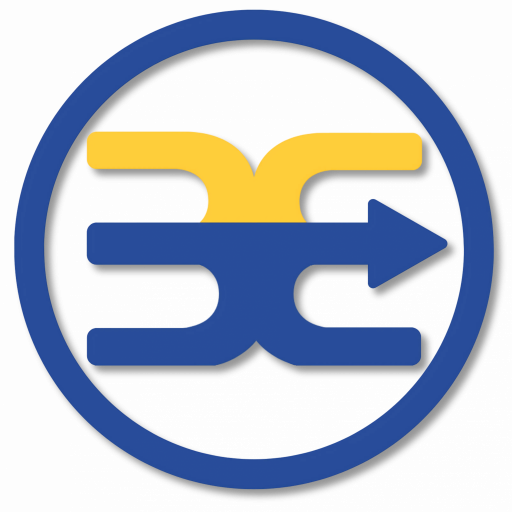Part 3 of the “Beyond Ergo” Series for Managers & Frontline Leaders
In Part 1 of this guide, we explored how poor posture is often the silent source of neck and back pain in computer-based work, and how building postural mindfulness can help your team stay ahead of discomfort.
In Part 2, we examined why simply following an ergonomic checklist is insufficient. Workers need the WHS skills to personalise their workstation, especially in hybrid environments where desks, chairs, and screens vary day to day.
Now in Part 3, we complete the picture by focusing on the everyday work behaviours that have a direct impact on physical wellbeing, and we’ve included three practical resources you can easily share with your team.
This final article brings together key strategies that frontline leaders can use to support their teams by highlighting the Top 10 Positive Work Behaviours from the Beyond Ergo program. These simple, effective habits help reduce risk, increase comfort, and develop the body awareness and muscle memory needed for long-term wellbeing—without the need for costly equipment or complex changes.
Some examples include:
✔️ Micro-movement and movement snacking every 20–30 minutes
✔️ Sit-stand flow (even without a standing desk!)
✔️ Screen and reach adjustments that reduce shoulder strain
✔️ Mental pause cues to reset posture during thinking tasks
✔️ End-of-day recovery routines to prepare the body for tomorrow
It’s practical. It’s evidence-based. And best of all, any team can start applying it today.
🟦 Why This Matters More Than Ever
Musculoskeletal pain from computer work isn’t just increasingly common—it’s costly. It drains energy, productivity, and morale. But many of the injuries we see are preventable through simple, low-effort behaviours done consistently over time.
That’s where the real opportunity lies: helping individuals not just set up their workstation, but also move well, sit smart, and reset regularly throughout the day.
🟢 10 Positive Work Behaviours That Protect Neck & Back Health
✅ 1. Micro-Movements & Movement Snacking
- Regularly incorporate small, frequent movements (every 20–30 minutes).
- Movement “snacks” prevent muscle fatigue and improve circulation without disrupting workflow.
✅ 2. Postural Reset Techniques
- Use no-cost body cues to reset posture throughout the day (e.g., gentle chin tuck, shoulder roll).
- Helps correct slumping or tech neck before it becomes painful.
✅ 3. Sit-Stand Flow (Not Just Standing Desks!)
- Shift between sitting and standing positions every 30–60 minutes (even without a sit-stand desk).
- Reduces pressure on the spine and encourages natural alignment.
✅ 4. “Aligned & Active” Sitting
- Sit forward on the chair base to activate core muscles and reduce slouching.
- Avoid long periods of passive, slumped sitting.
✅ 5. Screen Height and Reach Tweaks
- Position screens so top of monitor is at or just below eye level.
- Keep keyboard and mouse close to the body to avoid reaching and shoulder strain.
✅ 6. Body-to-Task Fit
- Adapt the workspace to fit the task and the individual, not the other way around.
- Includes chair, screen, desk, and document layout adjustments for minimal strain.
✅ 7. Mental Pauses to Physically Reset
- Take intentional “pause moments” to check posture and stretch while processing information.
- Encourages self-awareness and breaks the pain cycle.
✅ 8. Smart Use of Tech Tools
- Use voice-to-text, shortcut keys, or ergonomic accessories when needed to reduce repetitive strain.
- Encourages sustainable use of technology.
✅ 9. End-of-Day Recovery Routines
- Incorporate gentle stretches and posture resets at the end of the day.
- Promotes muscle recovery and prepares the body for the next workday.
✅ 10. Self-Care as a Work Skill
- Treat posture, recovery, and movement as professional skills—not afterthoughts.
- Builds long-term resilience and reduces risk of chronic pain or injury.
👩💼 Managers & Frontline Leaders: How You Can Make This Happen
You don’t need to be a health professional to make a difference. You just need to keep the conversation going.
Here’s how frontline leaders can share this knowledge:
- Start with the infographic
It’s simple, visual, and easy to pin in shared channels, emails, or team spaces. Use it to prompt quick team chats or post-shift reflections. Click Here to download this graphic as a PDF. - Incorporate “Movement Moments” into meetings
Encourage team stretch breaks or posture resets at natural pauses, during planning sessions, after lunch, or while loading programs. A ‘stand and wiggle’ when answering a call will do wonders! Click Here to download our ‘Stretch at your desk’ PDF, and Click Here for the Article showing four research-backed ways to reduce Neck Pain. - Lead by example
Model smart screen habits and recovery routines. A quick movement break by a team leader gives everyone else permission to follow suit. - Use WHS discussions to reinforce positive behaviours
Rather than focusing only on risk reporting, use team huddles or safety briefings to promote positive behaviours that prevent pain in the first place.
💬 Final Thought
The journey from pain to performance starts with awareness, evolves into skill, and is sustained through behaviour. This final piece in the three-part series brings it all together, providing your team with the daily habits they need to work effectively, feel better, and stay resilient in any work environment.
👀 Are you looking for new, practical and engaging additions to your wellness program this year? Then think about adding a Beyond Ergo Lunch and Learn. Message or email me to find out more: lizk@beyondergo.com.au
Let’s move beyond ergonomics—and build habits that last.
Take charge of your comfort at work—grab your Free Stretch at Your Desk sheet to loosen tight muscles and the Roll–Reset–Relax guide to release neck strain and restore posture. If pain is already affecting you, book a 1:1 consultation for personalised strategies that get you back on track.
#BeyondErgo #WorkplaceWellbeing #Ergonomics #PeopleLeaders #WHS #TeamCare #HybridWork #PostureMatters #Leadership
💡 Enjoyed this post?
Subscribe to our monthly newsletter for fresh insights and Beyond Ergo updates — straight to your inbox.


